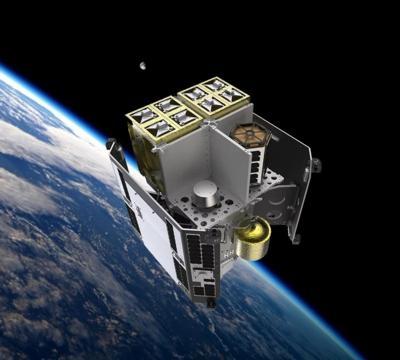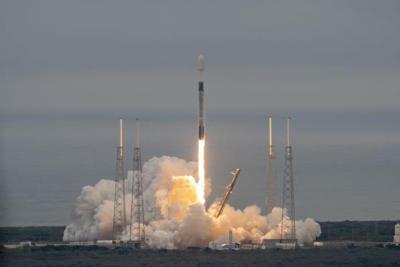Sun, Apr 03, 2022
D-Orbit's Package Includes Plant Growth Experiments, USAF Research Sats, and Personal Tchotchkes
D-Orbit's Spacelust has made its way into space aboard the SpaceX Transporter-4 mission, taking its spot as the 5th mission using their proprietary ION Satellite Carrier.

The ION system is designed to be a versatile and cost-effective orbital transfer vehicle designed both to precisely deploy satellites and perform technology demonstrations for third-party payloads in orbit. Spacelust saw the ION successfully deployed at a 500 km Sun synchronous orbit. D-Orbit chief commercial officer, Renato Panesi, said the 5th ION in its orbital fleet is a sign of their rapid growth.
“Every mission we launch is built upon the success of the ones that came before it," he said after news of a successful deployment was announced. "We are steadily increasing our performance with each new mission, expanding our customer base and growing our exceptional team. As we execute our strategic plans, we are continuing to demonstrate the strength of our technology and are advancing D-Orbit’s path to enabling the transportation and logistics infrastructure to drive the evolving space economy.”
Aboard the ION, payloads from Kleos Space, Upmosphere, and the Space Exploration Laboratory found their way to their designated positions. Kleos sent 4 satellites to augment their growing constellation, bringing the total to 12. The change will increase the average daily revisit rate to around 5 times per day over an area of interest as well as increase the accuracy of geolocation for frequency transmissions to within 300 meters for ISR customers around the world.
Upmosphere sent an oddity in line with the company's mission: A wooden UP-box containing customer mementos. Their operation advertises the capability to send personal effects into space for several years aboard the ION.

The Space Exploration Laboratory sent its 3U CubeSat, the PlantSat, in order to study the growth a plants in LEO in an environment designed to replicate conditions on the martian surface. It was joined by Suchai 2 and Suchai 3, which will perform "basic science research" funded by the U.S. Air Force Office of Scientific Research, a branch of the AFRL. The satellite data gleaned will be studied by multidisciplinary teams, which will "undertake cutting edge research on scientific exploration and technological development."
More News
Klyde Wonders If The 'New' SouthWest Can 'Out-Spirit' Spirit... FMI: www.klydemorris.com>[...]
From 2012 (YouTube Edition): Extensive Expertise in Backup Solutions Makes MCIA Uniquely Qualified In This Market There's no such thing, in aviation, as TOO much caution... hence t>[...]
Aero Linx: Historic Aircraft Association (HAA) The Historic Aircraft Association (HAA) was founded in 1979 with the aim of furthering the safe flying of historic aircraft in the UK>[...]
Jamming Denotes emissions that do not mimic Global Navigation Satellite System (GNSS) signals (e.g., GPS and WAAS), but rather interfere with the civil receiver's ability to acquir>[...]
"Respectfully, U.S. and European airlines should not be even contemplating the future purchase of airplanes from Chinese military companies...” Source: US Representative Raja>[...]
 Klyde Morris (05.02.25)
Klyde Morris (05.02.25) Classic Aero-TV: Introducing The MD302--Mid-Continent's Standby Attitude Module
Classic Aero-TV: Introducing The MD302--Mid-Continent's Standby Attitude Module ANN's Daily Aero-Linx (05.04.25)
ANN's Daily Aero-Linx (05.04.25) ANN's Daily Aero-Term (05.04.25): Jamming
ANN's Daily Aero-Term (05.04.25): Jamming Aero-News: Quote of the Day (05.04.25)
Aero-News: Quote of the Day (05.04.25)




